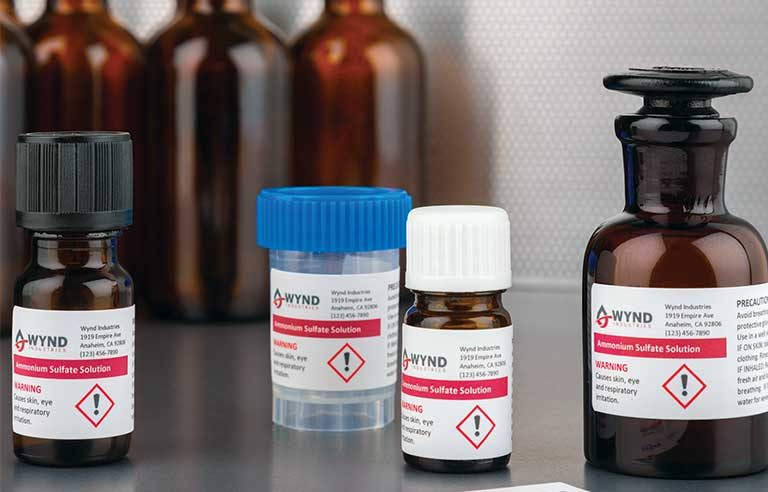Handling hazardous chemicals
What are the requirements for labeling secondary chemical containers?

Photo: Avery Products Corp.
Responding is Colwin Chan, marketing director, Avery Products Corp., Brea, CA.
When handling hazardous chemicals in the workplace, ensuring safety is essential. A secondary container is used when transferring chemicals from the original container to a new one. Examples of secondary containers include spray bottles, jugs, glass bottles, cans and pails. The use of secondary containers is common in various industries and occupations, including manufacturing, janitorial and sanitation, health care, education, and hospitality.
The requirements for labeling hazardous chemicals in the United States are established by OSHA’s standard on hazard communication (1910.1200), which is aligned with the Globally Harmonized System of Classification and Labeling of Chemicals – also known as GHS.
To better understand secondary container labeling, it’s important to address primary container labeling as well. A primary container is the original container in which a chemical arrives from the supplier. The primary container should have been shipped with a label that includes all of the GHS label elements that are required by 1910.1200. This information is also outlined in Section 2 of the Safety Data Sheet provided by the chemical supplier.
The six elements of a compliant GHS label for primary/shipped containers:
Product name/identifier: Identifies the substance and should match the product identifier on the SDS.
Signal word: Signal words indicate the relative severity of the hazard (“Danger” or “Warning”).
Hazard statement: A statement that specifies the nature of the hazards.
Pictograms: Symbols that convey health, physical and/or environmental information for quick recognition.
Precautionary statements: Measures that could be used to minimize and/or prevent the effects of the hazard, including first aid.
Supplier identification: Includes name, address and telephone number of the supplier.
When it comes to labeling secondary containers, the hazcom standard allows for some limited flexibility. For example, there’s a labeling exemption when a chemical that’s transferred to a secondary container is used immediately within a work shift by the same person who transferred the chemical.
OSHA labeling requirements for secondary containers that don’t qualify for an exemption should include, at a minimum, the product name/identifier as well as general hazard information communicating physical and health hazards associated with the chemical. This flexible stance on secondary container labeling means that alternative labeling methods such as Hazardous Materials Identification System or National Fire Protection Association labels can still be used for secondary containers, as long as they’re consistent with 1910.1200 and the employer can show that employees understand the hazards at a level equal to what would have been accomplished using a full GHS label. It’s also important to note that the hazard rating systems for GHS versus HMIS or NFPA are reversed. GHS ratings run from 1 through 5, with 1 being the most hazardous, while HMIS and NFPA ratings run from 4 through 0, with 4 being the most hazardous.
Although a GHS label doesn’t show the rating number on the label, it can still potentially cause confusion. Overall, it’s best to use a fully compliant GHS label for your secondary containers to keep employees safe and ensure compliance in case of an OSHA inspection.Editor's note: This article represents the independent views of the author and should not be considered a National Safety Council endorsement.
Post a comment to this article
Safety+Health welcomes comments that promote respectful dialogue. Please stay on topic. Comments that contain personal attacks, profanity or abusive language – or those aggressively promoting products or services – will be removed. We reserve the right to determine which comments violate our comment policy. (Anonymous comments are welcome; merely skip the “name” field in the comment box. An email address is required but will not be included with your comment.)

